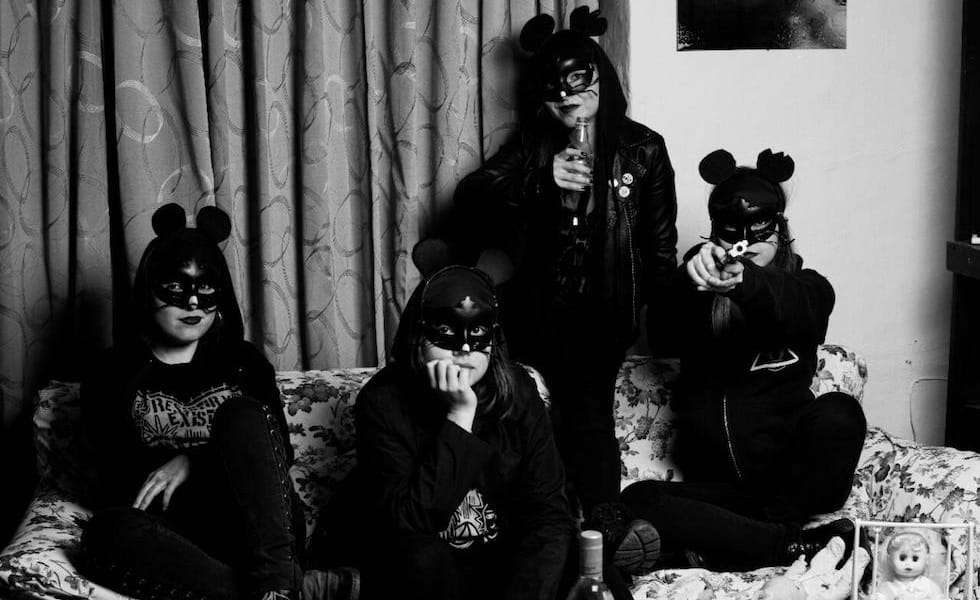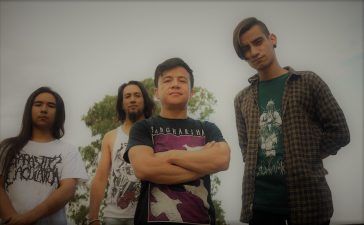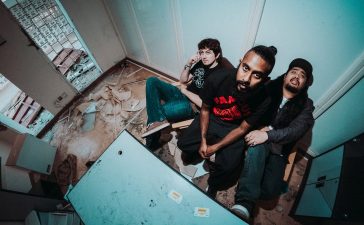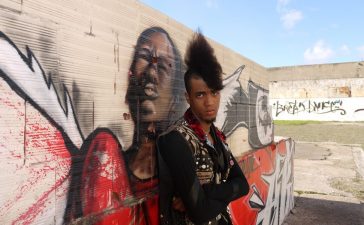Peru in and of itself is a natural wonder of the world. It’s home to the world’s highest lake – Lake Titicaca, sitting pretty at almost 4000 metres above sea level – and the world’s deepest canyon, with the Cotahuasi Canyon plunging some 3000 metres – for some perspective, that’s twice the depth of the Grand Canyon. About 500 kilometres from the capital of Lima, you’ll find Cajamarca nestled in the Andes, a city, like most in the region, that’s awash with history dating all the way back to the Incas.
It was the site of a fierce battle in 1532 which saw the execution of Atahuallpa, the last emperor of the Inca. Though for something more recent – and something far cooler – it’s also the hometown of punk rock force, Las Ratapunks. Since 2017, Las Ratapunks have released two EPs, their debut Ratas De Ciudad (City Rats) and 2020’s Fracaso, Año de la Rata (Failure, Year Of The Rat), which is available in slick cassette merch bundle that’s very much worth a click. The band were kind enough to give BLUNT the royal tour of their hometown, showing us how punk took shape in their part of the world.
How did you become a punk?
In Cajamarca, since the ’90s, a movement began from which bands emerged with their own songs of punk, hardcore punk, rock, fusion and other genres. When we were teenagers, we found a movement where concerts were held, band merchandise sold, conversations [were had] and we began to learn more about music. Although we all have different stories of how we got to punk, we coincided in the punk concerts in 2007 and 2009, where we discovered a space of resistance and equality.
Growing up as a young punk in your hometown, what are some of the places you would hang out?
We live in a small city where public spaces are taken as the parks to meet, talk and conspire like the small square Belen, where we have met to rehearse in our first stage as a band, in addition to organising our first concerts at the Square of the Nuns, a space where we held shows, fanzine fairs, talks about animal consciousness and acoustic concerts.
How would you describe your typical punk from your hometown?
The last punks were seen around 2007 but then eventually some punk bands emerged and few purely punk and hardcore punk bands survived with a raging aggressive and solid sound.
Are there any unwritten rules or secret codes for punks in your hometown?
Not in our city, but in the country it could be said that there are certain parameters to be punk, which we break in all dimensions, which is why they say that we disrespect punk.
How does the general community in your hometown take to punks, and punk music?
In Cajamarca there is no punk community as such, there is a community of friends dedicated to music in different genres who always unite when necessary, especially in times of crisis, for the same reason we dance with all the bands whenever there were concerts. The audience is limited and the noise is liked by few.
In concerts, most of the time we are accompanied by members of bands and the occasional friend who supports the scene, buys the merch and listens to local bands but in general, the rest of the population may not know about the existence of punk bands and rock of the city.
What do you think is the biggest threat to the punk community in your city?
The pandemic and the restrictive politics of social control have resulted in the closure of the few spaces where meetings and concerts were held. Until now it is not possible to play live music in public. It even became difficult to rehearse because several rehearsal rooms did not open their doors during the pandemic for fear of contagion.
All over the world, politics and punk go hand in hand. What are some of the political issues that influence punks in your hometown?
The corruption that Perú experiences is a serious problem since the Spanish invasion. The abuse of minors, the machismo that kills every day, impunity, harassment, homophobia, the Catholic Church and its cover-up of pedophiles, and its ties of corruption with politics.
In Cajamarca, there are several eco-territorial conflicts due to the legal and illegal mining exploitation that generates pollution due to its extractive activities that impact the environment and the lives of the inhabitants. In many cases, the lives of environmental defenders are put at risk. This is a serious problem that also exists in the Peruvian jungle, with the extraction of various minerals, logging, animal trafficking, and human trafficking.
Are there any other locations in the city that are important to its punk community?
Bars have been important places for meetings and concerts, which were affected by the pandemic and had to close. Other important spaces are independent stores that contribute with the distribution of merch and music diffusion, such as the Perro Rabioso distro.
Who are some great punks, or punk bands making moves from your hometown we can check out?
VETE A LA MIERDA, Lumpen Punk, Nueva Dirección.
What are your tips for any punks travelling through your hometown?
When the concerts are reactivated, you can visit Cajamarca and learn a little more about the bands that move in the city. Cajamarca has many places to know, you can move around the city on foot, the food is cheap and you can easily find macerated [sugar cane distillates with fruits or herbs]. February is a good time to visit since the most important traditional festival in the city [takes place] where you drink a lot and eat deliciously.









